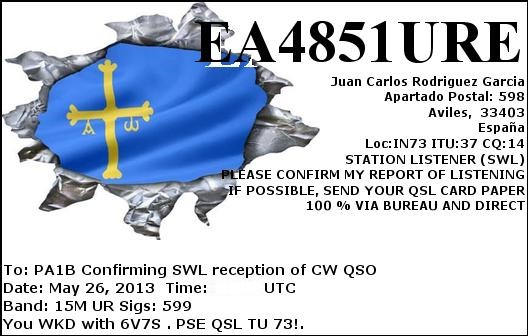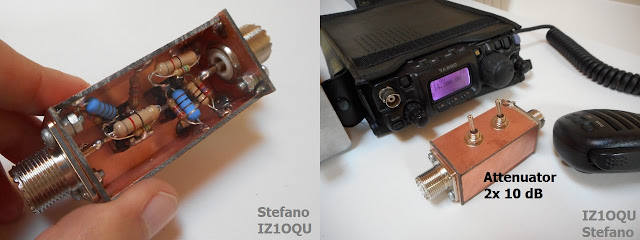 |
Monster Cylinder Dipole
Click on the pictures to enlarge |
Monster Cylinder Dipole After the experiment with the
Red Bull antenna, I built a second Cylinder Dipole with two
Monster energy drink cans of 500 ml. The cans together with the coil resonate at
16 MHz.
The Monster Cylinder Dipole has a wingspan of 15" or 35 cm. Hi.
The 300 ohm ribbon is connected to the point at the top of the coil (in the picture) with the red and yellow alligator clips (See the
white arrow in the top of the picture). The antenna is hanging from the ribbon. I can
adjust the SWR 1:1 with my symmetrical tuner.
Cylinder dipole
 |
| PA1B Cylinder Dipole. The current at the surface of the cylinder generates the field. |
Closed Monster Cans
In this antenna I use the complete can, without removing the top and the bottom of the can, to keep the construction simple and the cylinders strong. Closed cylinders are
much stronger than open cylinders.
Monster cans
Although it is not easy to compare two antenna's, that were used in
two different contests a week apart, the cylinder dipole with the 500 ml
Monster cans is probably
better than the Red Bull antenna.
In general the
cylinder dipoles are very
quite on receive, because of the small length of the antenna.
On the air
In the H.M. King of Spain contest I made QSO's on 7 MHz, 14 MHz and 21 MHz.
Most QSO's were made on 21 MHz with a power of 3.6 W to 360 mW all over Europe.
This Monster cylinder dipole with two 500 ml cans works better on 21 MHz than on 14 MHz.
The SWR of the antenna is adjusted with the symmetrical tuner.
On 7 MHz it was very difficult to make a QSO. The QSO's on 7 MHz were made over a short distance. NVIS. The low
relative heigh at 7 MHz reduces the signal.
The table below shows the DXCC countries per band and per power category.
Across the Atlantic
I very much enjoyed the QSO with
N1KWF in New Hampshire over a distance of 3490 Miles, with a power of 3.6 Watts.
Please notice that that the
Monster cylinder dipole with 500 ml cans:
* has a length of
15" (38 cm)
* is placed in the shack,
* at a height of
4 meter above the ground.
Click on the table below, to read the
hand written notes.
In this way, I record the
power that I use in each QSO, on paper .
The QSO data is logged in
SD of EI5DI.
 |
| List of QSO's with the Monster cylinder dipolePA1B |
The QSO's in red are more than
1000 Miles per Watt QSO's.
 |
DXCC's per band and per power category PA1B
|





 The value Miles/SQRT(watt) is calculated from the distance in miles divide by the square root of the power in watt. This value is very easy to calculate and is an excellent propagation indicator.
The value Miles/SQRT(watt) is calculated from the distance in miles divide by the square root of the power in watt. This value is very easy to calculate and is an excellent propagation indicator.





 Juan EA4851URE - SWL confirms my QSO that with 6V7S from Senegal, West Africa.
Juan EA4851URE - SWL confirms my QSO that with 6V7S from Senegal, West Africa.





















